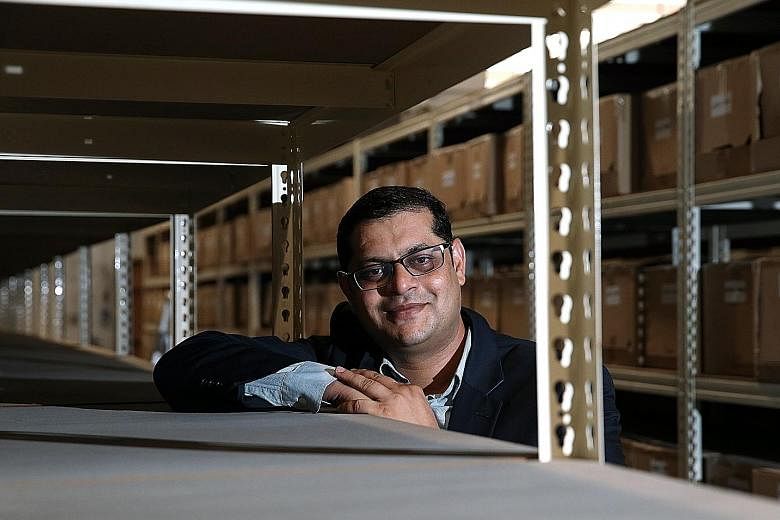A plan to roll out lockers across the nation to receive e-commerce parcels has been given the thumbs up by local logistics firms.
They expect the initiative, announced earlier this week, to cut delivery costs for firms and consumers - and lift productivity and e-commerce.
The Government - which has yet to provide precise details of the scheme - can play a coordinating role, with the private sector taking a stake, experts said.
Delivering to lockers is cheaper than going door to door, delivery firms told The Straits Times. These savings can be passed on to consumers, said Mr Vaibhav Dabhade, co-founder and chief executive of logistics firm Anchanto.
"Normally I would need to go to seven different blocks ringing the bell, handing over the parcel, taking the lift, waiting for the lift, parking my van, 30 or 40 times. Instead of that, I would drive my van to the nearest lockers and put all the orders for the seven to 10 blocks in the lockers."
Mr Jim Tan, marketing and communications manager at GoGoVan, agreed: "My (delivery) cost will be reduced, that means we can charge the customer a lower price."
The lockers will boost demand for e-commerce and logistics services, with consumers finding it easier to collect goods and delivery costs coming down, experts said.
The use of lockers is also unlikely to shrink the market for last-mile players - companies that make the delivery from the warehouse to the customer's house - as they are still needed to deliver parcels to lockers, noted Mr Dabhade.
Currently, both SingPost and Ninja Van have invested in a similar locker concept but said they also welcomed the move.
Many experts also said a public-private partnership is likely the best model for such a move.
Logistics consultancy eComLog Network Solutions chief executive Paul Lim said the Government should cooperate with a wide range of logistics firms on this.
"Do you think competitors like to come together to own a network when they are 'fighting' against each other?" said Mr Lim, who is also founder and president of Supply Chain Asia Community.
The efforts of these firms, however, can be coordinated with mediation from the Government.
A government role is also needed to persuade some property owners and regulatory bodies to allow lockers on their premises, he added.
"If I own a place and you want to put lockers at my place, it is not just an issue of charging rental but I may not want to let you do so because of aesthetic reasons or security reasons," Mr Lim said.
Another option is for firms to bid to build the lockers and then lease them out to other firms, said Professor Tan Kok Choon, director at The Logistics Institute-Asia Pacific of the National University of Singapore. "We can let the commercial entities work out an arrangement. I don't see the need for the Government to subsidise this."
For the plan to work, lockers need to be in high-density, easy to access places and be simple to use, added FedEx Express Singapore managing director Khoo Seng-Thiam .
Setting up security, surveillance and emergency processes for such an infrastructure will also be necessary. "All key stakeholders including the operator, delivery companies, HDB, town councils and so on need to be aligned, trained and monitored," said Mr Dabhade.
Entrepreneur Boo Kok Chuon, 29, who shops online, said that good locker sites include places near MRT stations and bus interchanges, and community centres.
"Lockers would not be useful if they are at places not easily accessible by public transport".

